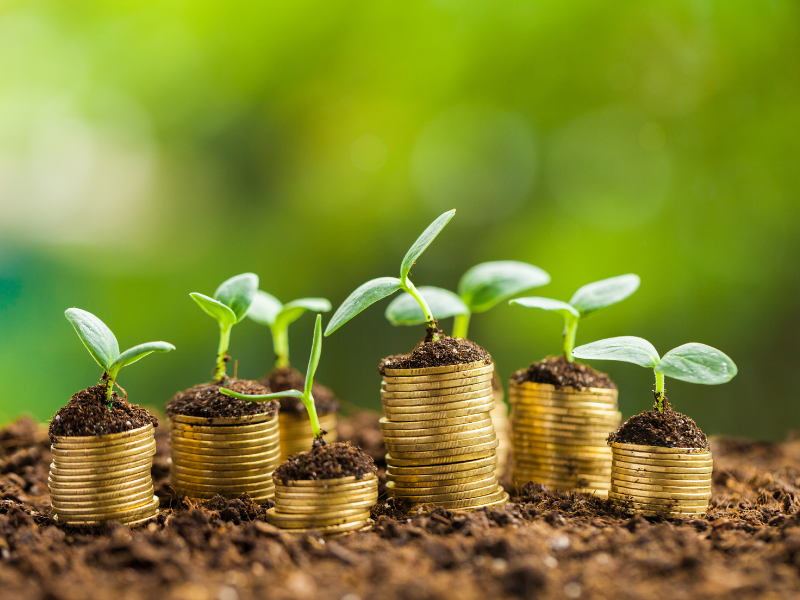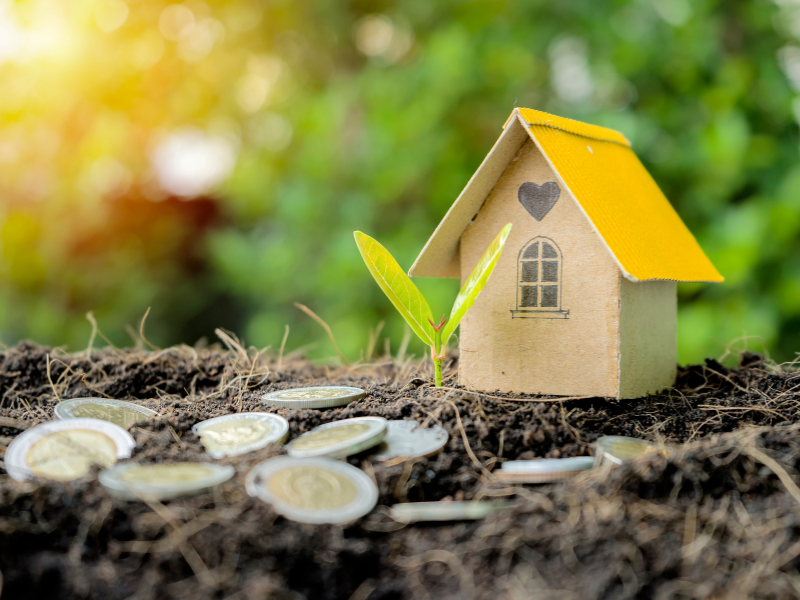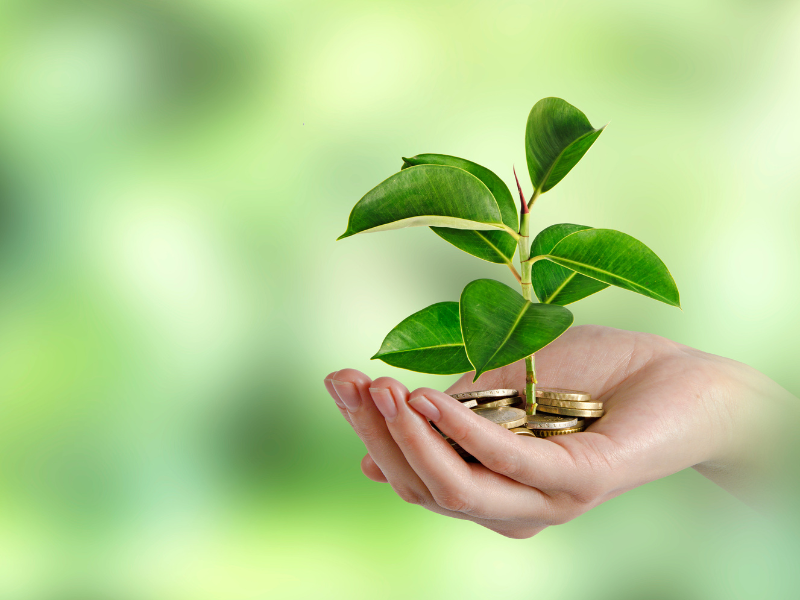Introduction
In an era of increasing environmental consciousness, green investment has emerged as a popular and lucrative choice for many individuals and businesses seeking to make a positive impact on the world while also earning substantial returns on their investments. This article aims to provide a comprehensive guide to green investment, covering everything from its definition to its different types, factors to consider before investing, and practical tips to start investing in green projects. Whether you are a seasoned investor or someone looking to dip their toes into sustainable investments, this article will serve as your go-to resource.
What is Green Investment?

Green investment, also known as sustainable or socially responsible investment, can be broadly defined as the practice of allocating capital to businesses, projects, and initiatives aimed at promoting environmental sustainability and social well-being. Unlike traditional investments, which prioritize financial returns above all else, green investment seeks to generate both financial and societal benefits. By investing in companies or projects that prioritize renewable energy, energy efficiency, sustainable agriculture, green real estate, and clean technology, individuals and institutions can actively contribute to the transition towards a greener and more sustainable future.
Why Should You Consider Green Investment?

The decision to invest in green projects goes beyond financial gain; it aligns with an individual’s values and the desire to make a positive impact on the environment. Here are some compelling reasons to consider green investment:
- Environmental Impact: By investing in green projects, you play a direct role in supporting initiatives that reduce carbon emissions, promote clean energy, conserve resources, and protect biodiversity. Your investments can contribute to mitigating climate change and preserving the planet for future generations.
- Financial Returns: Contrary to popular belief, green investments can be highly profitable. Renewable energy, for example, has seen substantial growth in recent years, providing investors with attractive returns. As governments worldwide increase their focus on sustainability, green investments are expected to outperform traditional investments in the long run.
- Risk Mitigation: Investing in green projects can help diversify your portfolio and reduce exposure to industries that may be negatively impacted by climate change regulations or resource depletion. By spreading your investments across different sectors, you can minimize risk and potentially increase stability in your overall investment strategy.
- Ethical Considerations: Many individuals prefer investments that align with their personal values. Green investment offers an opportunity to support companies and initiatives that prioritize ethical practices, social responsibility, and sustainability. By investing in socially responsible projects, you can contribute to a more equitable and environmentally conscious society.
Types of Green Investment

Green investment encompasses various sectors and industries, all focused on promoting sustainability. Here are the main types of green investment to consider:
Renewable Energy
Investing in renewable energy involves allocating funds to companies or projects that generate electricity from sources such as solar, wind, hydro, or geothermal energy. Renewable energy investments have gained significant traction in recent years due to global efforts to reduce reliance on fossil fuels and combat climate change. Companies involved in the manufacturing of solar panels, wind turbines, and energy storage systems, as well as utilities operating renewable energy projects, present attractive investment opportunities.
Energy Efficiency
Investing in energy efficiency revolves around supporting projects that aim to reduce energy consumption and improve overall efficiency. This can include funding initiatives such as building retrofitting, investing in energy-efficient appliances, or financing companies that develop innovative technologies to optimize energy usage. Energy-efficient investments offer the potential for significant financial returns while simultaneously reducing greenhouse gas emissions and conserving resources.
Sustainable Agriculture
Investments in sustainable agriculture focus on supporting farming practices that prioritize ecological balance, resource conservation, and the production of healthy, organic food. This can involve funding organic farms, regenerative agriculture practices, vertical farming technologies, or companies that develop and distribute sustainable agricultural products.
Green Real Estate
Green real estate investments revolve around supporting the development and operation of environmentally friendly buildings, such as those designed with energy-efficient systems, sustainable materials, and renewable energy integration. This can include financing green building projects, investing in energy-efficient commercial properties, or supporting companies that specialize in sustainable real estate development and management.
Clean Technology
Investing in clean technology involves allocating capital to companies and projects that develop innovative solutions to combat climate change, reduce pollution, and promote sustainable practices. Clean technology investments can encompass various sectors, including water and waste management, recycling technologies, electric vehicles, energy storage systems, and sustainable transportation solutions.
Green Funds
Green funds, also known as sustainable or ESG (environmental, social, and governance) funds, allow investors to pool their resources and invest in a diversified portfolio of green projects. These funds are managed by experienced professionals who select investments based on their environmental, social, and financial performance. Green funds provide individuals with an easy and efficient way to enter the green investment market while spreading their risk across various projects and sectors.
Factors to Consider Before Investing in Green Projects

While green investment offers promising returns and the opportunity to make a positive impact, it is crucial to consider several factors before committing capital to specific projects. These factors will help evaluate the potential risks and rewards of green investments and ensure alignment with your personal financial goals and values.
Risk Assessment
As with any investment, it is essential to assess the risks associated with green projects. Consider factors such as regulatory changes, technological advancements, market demand, and the overall financial stability of the project or company. Conducting thorough due diligence and seeking advice from professionals can help identify potential risks and mitigate them effectively.
Return on Investment
Evaluating the potential return on your investment is critical to making informed decisions. Look for projects with solid financial projections and consider the expected duration of the investment. While green investments may provide long-term returns, it is essential to have realistic expectations and understand the timeline for financial gains.
Market Demand
Understanding the market demand for a specific green project is vital. Consider factors such as government incentives, public awareness, and the overall adoption rate of sustainable solutions. Investments in sectors with high market demand are more likely to yield positive returns and long-term growth.
Regulatory Environment
Regulatory policies and frameworks play a significant role in shaping the green investment landscape. Stay informed about government regulations, incentives, and subsidies related to green projects. Changes in legislation or the introduction of new environmental policies can impact the financial viability of certain investments.
Environmental Impact
Assessing the environmental impact of a green investment is crucial. Look for projects or companies that have a measurable and positive effect on reducing greenhouse gas emissions, conserving resources, or promoting sustainable practices. Consider the project’s alignment with internationally recognized sustainability standards and certifications.
How to Start Investing in Green
Getting started with green investment may seem daunting, but with the right approach, anyone can become an active participant in driving sustainable change. Here are some practical steps to take:
Research and Educate Yourself
Before diving into green investment, take the time to educate yourself about the various sectors, opportunities, and risks involved. Familiarize yourself with key terms, industry trends, and the latest innovations driving sustainability. Attend webinars, read industry publications, and join online communities focused on green investment.
Choose Your Investment Route
Once you have a solid understanding of green investment, consider the investment route that aligns with your financial goals and values. Options include direct investments in specific projects or companies, investing in green funds, or working with a financial advisor who specializes in sustainable investments. Evaluate each option’s pros and cons, and select the most suitable path for your needs.
Diversify Your Portfolio
Diversification is a fundamental principle of investment. Spread your capital across multiple green projects, sectors, and asset classes to minimize risk and maximize potential returns. Consider investing in different types of projects, such as renewable energy, clean technology, and sustainable agriculture, to create a balanced and diversified portfolio.
Monitor and Adapt
Stay actively engaged in your green investments by continuously monitoring their performance and adapting your portfolio as needed. Keep up with industry trends, technological advancements, and regulatory changes that may impact your investments. Regularly review your investment strategy and make informed decisions based on thorough analysis and expert advice.
FAQs
What is the minimum amount required to start investing in green projects?
There is no fixed minimum amount required to start investing in green projects. The investment amount primarily depends on your financial situation and the specific projects or funds you choose. Some green funds or investment platforms may have their minimum investment requirements, which can range from a few hundred to thousands of dollars. However, it is possible to start with small amounts and gradually increase your investments as you gain more experience and confidence.
Are green investments riskier than traditional investments?
Green investments, like any other investment, carry a certain level of risk. However, with increasing market demand, supportive government policies, and rapid advancements in green technology, the risks associated with green investments are gradually decreasing. It is essential to conduct thorough research, diversify your portfolio, and stay informed about the latest developments in the green industry to mitigate potential risks effectively.
How can I measure the social impact of my green investments?
Measuring the social impact of green investments can be challenging, as societal benefits are not always quantifiable in monetary terms. However, there are several frameworks and certifications available, such as B Corp certification and the Global Reporting Initiative (GRI), which assess a company’s social and environmental performance. Additionally, you can consider partnering with impact investing organizations that specialize in measuring and reporting the social impact of investments.
Can I make a difference with small-scale green investments?
Absolutely! Small-scale green investments can collectively make a significant impact on the transition toward a sustainable economy. Whether you invest in a community solar project, support a local organic farm, or contribute to a green crowdfunding campaign, every dollar invested in green projects helps drive positive change. Don’t underestimate the power of small-scale investments in creating a greener and more sustainable future.
Conclusion
Green investment presents a unique opportunity to align your financial goals with your values by supporting projects and companies that promote environmental sustainability. By investing in renewable energy, energy efficiency, sustainable agriculture, green real estate, clean technology, or green funds, individuals and institutions can actively contribute to building a greener and more sustainable future.
While green investments carry risks like any other investment, the potential financial returns and positive environmental impact make them an attractive option for individuals seeking both profit and purpose. With thorough research, careful consideration of risks and rewards, and a diversified portfolio, anyone can embark on a green investment journey and become a catalyst for positive change in the world.




